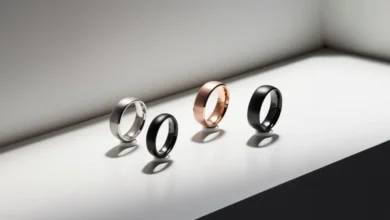What Happens Inside Your Tissue When Shockwave Therapy Is Applied?

Shockwave therapy is more than just a trending treatment—it’s a clinically proven technique used to address stubborn musculoskeletal issues. As a non-invasive solution, it helps break the cycle of chronic pain by targeting tissues beneath the skin with acoustic energy. But what exactly happens inside the body when these shockwaves are applied? This post dives deep into the microscopic events that unfold within tissues and how they contribute to healing. Shockwave therapy in Edmonton efficiently cures diseases such as tendon injury, plantar fasciitis, and calcific tendonitis by initiating the body’s own healing mechanism.
The Science Behind the Shock: Understanding Shockwave Therapy
Shockwave therapy is an alternative method of treatment that uses high-energy waves for healing, reducing pain, and improving mobility. Initially created to dislodge kidney stones, it’s today widely applied in sports medicine, orthopedics, and physiotherapy. The treatment enhances blood flow, helps regenerate tissues, breaks down calcifications, and stimulates collagen production.
Different Types of Shockwaves
Shockwave therapy has two broad categories based on the delivery of waves and penetration depth:
Focused Shockwaves
Produced through electromagnetic, piezoelectric, or electrohydraulic sources, targeted shockwaves penetrate deeper tissues accurately and are suitable for:
- Tendon injuries (Achilles tendinopathy, patellar tendinitis)
- Bone healing (delayed union or non-union fractures)
- Deep muscular issues (myofascial trigger points, chronic pain)
Their concentrated energy is highly effective for chronic and stubborn injuries.
Radial Shockwaves
Radial pressure waves have a broader, more dispersed energy spread and are ideal for:
- Large muscle groups (quadriceps, hamstrings, lower back)
- Plantar fasciitis (heel pain relief)
- General soft tissue injuries (enhancing circulation and metabolism)
Radial shockwaves distribute over larger surfaces, relieving pain, relaxing tight muscles, and enhancing mobility.
How the Waves Are Delivered
Shockwave therapy involves using applicators to transfer pinpoint bursts of energy to the tissue that hurts or is damaged. Here’s the quick rundown:
- Assessment: If required, the therapist pinpoints the problem area via palpation or imaging.
- Gel Application: The skin is provided with a conductive gel for effective transfer of the shockwaves.
- Energy Delivery: High-energy pulses are emitted through a radial or focused applicator, with the setting adjusted to suit the condition.
- Cellular Response: The shockwaves cause blood flow, collagen formation, and tissue repair.
Some patients have immediate pain relief, and others experience improvement over a few sessions.
Why Choose Shockwave Therapy?
- Safe and effective for chronic and acute musculoskeletal pain
- Enhances mobility and accelerates recovery
- Offers sustained pain relief without surgery or drugs
- Uses acoustic waves to treat the underlying cause of pain.
- Facilitates natural healing, either independently or in combination with other rehab techniques
Beneath the Surface: What Happens Inside Tissue?
Mechanical Microtrauma That Triggers Healing
Shockwave therapy is not merely symptom management—it’s a cellular process that induces true healing. The intense acoustic waves applied during treatment stimulate controlled microtrauma in the target tissues. It’s a tactical way of stimulating the body’s natural healing processes.
Here’s how it works:
- Controlled stimulation: Microtrauma disrupts the involved tissue and gets the repair underway.
- Regeneration boost: Stimulation of production of growth factors such as VEGF and proteins necessary for collagen synthesis.
- Cellular activation: Fibroblasts, among other repair cells, get activated to facilitate the regeneration of the tendons, ligaments, and muscles.
This regeneration cascade encourages long-term recuperation, most notably in long-standing conditions when natural healing is levelling off.
Cellular Response and Regeneration
Stem Cell Activation
Shockwave therapy activates stem cells in the injured tissue to stimulate the regeneration of soft tissues such as tendons, ligaments, and fascia. It is especially effective for chronic conditions, aiding recovery and function long term.
Enhanced Blood Circulation and Metabolism
Shockwaves activate local blood flow, delivering a healthy dose of oxygen and nutrients to injured tissues. They also help remove inflammatory waste products and metabolic byproducts, reducing pain, swelling, and stiffness.
Collagen Remodeling
Collagen gives tissues strength and elasticity. Shockwave therapy stimulates new collagen formation, which reinforces injured structures and preserves flexibility, preventing future injury.
Breakdown of Calcific Deposits
In calcific tendonitis, shockwave therapy dissolves calcium deposits in tendons. The body reabsorbs the fragments naturally, leading to less pain and greater mobility.
With these combined results, shockwave therapy presents a way of recovery, aiding tissue repair, decreasing stiffness, and resuming normal movement and function without surgery.
Enhanced Blood Circulation and Metabolism
Another significant advantage of shockwave therapy is its ability to enhance local circulation and metabolism, particularly useful in tissues with compromised circulation or impaired healing.
The significant advantages are:
- Enhanced oxygen and nutrient supply: Facilitates quicker and stronger healing of tissues.
- Removal of waste and inflammatory metabolites: Improves joint mobility and reduces pain.
- Increased lymphatic drainage: This decreases swelling and enhances detoxification in tissues.
Shockwave therapy promotes circulation and metabolism, allowing the body to heal faster, reduce inflammation, and regain function—without surgery.
Clinical Applications: Where Shockwave Works Wonders
Common Conditions Treated
- Plantar fasciitis
- Tennis elbow
- Calcific shoulder tendinopathy
- Jumper’s knee
- Hip bursitis
- Achilles tendinopathy
Chronic Pain vs. Acute Conditions
- More effective for chronic conditions that haven’t responded to traditional therapy
- Supports recovery for stubborn injuries that require enhanced healing stimulation
Safety, Sensations, and Side Effects: What Patients Can Expect
Shockwave therapy is an easily tolerated form of treatment with few risks. Knowing what to expect can allow patients to be more prepared and confident throughout their sessions.
What to Expect
- Sensations While Under Treatment: Patients can experience mild pressure or discomfort, particularly over sensitive spots.
- Temporary Side Effects: Redness, mild swelling, or tenderness can occur but will typically disappear within a few days.
- Post-Treatment Care: Light activity is advised, but heavy exercise is avoided for 24-48 hours.
Healing with Precision and Power
Shockwave therapy promotes proper healing. Instead of just masking pain, it targets the root cause. Shockwave Therapy in Edmonton offers a research-backed solution for musculoskeletal pain, supporting long-term recovery and relief.
It restores function and enhances recovery when used in conjunction with customized physiotherapy techniques. At Momentum Spine and Sports Physiotherapy, patients receive thorough care to speed up healing. Reclaim mobility and strength—schedule a visit today!
Keywords: Shockwave Therapy in Edmonton, radial shockwave, focused shockwave, acoustic wave, Plantar fasciitis, calcific tendonitis, chronic pain, tissue regeneration, collagen production




